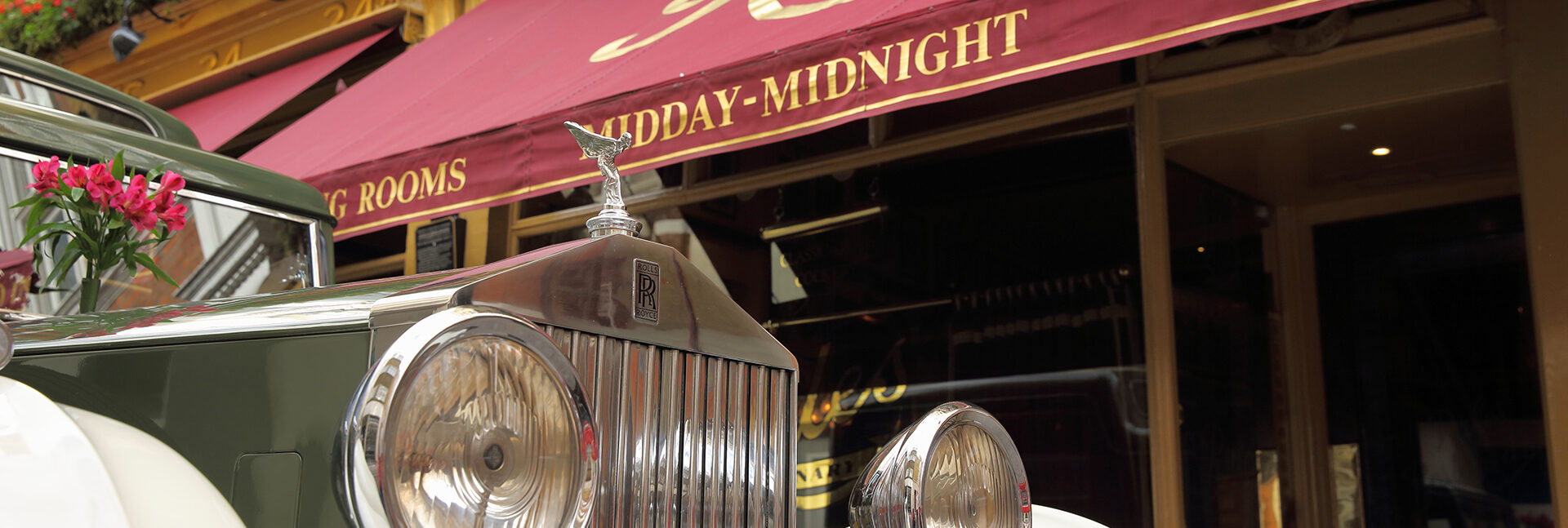Greater London Council. Public Inquiry 3 August 1971
Sir John Betjeman called. Examined by Mr Read.
I was born in London and so were my parents. I have lived in London most of my life. I was born in 1906. I am a poet and prose-writer, particularily on English architecture and topography. I founded and for many years edited the Shell Guides. I edited Collins’ Guide to English Parish Churches. I started in journalism as Assistant Editor of the Architectural Review. I was for some years architectural correpondent to the Daily Telegraph. I am a Companion of Literature and an Honorary Associate of the Royal Institute of British Architects. Until my extended term of office expired last year. I was a member of the Royal Fine Art Commission. I am an honorary advisor to the Historic Buildings Committee of the GLC and one of her Majesty’s Commissionrs of Ancient Monuments.
Mr Wood wrote to me on the fifteenth of July this year, from Rules, of which he is managing director, and asked me to speak up for his restaurant which I have patronised off and on since the late twenties. This I gladly do; not just because Rules is, at present, an excellent restaurant – and incidentally I might just say that I was not asked to lunch by Mr Wood and this is a purely voluntary statement. Not just because Rules is an excellent restaurant but because its interior on the ground floor is unique and irreplaceable and part of literary and theatrical London. As at present furnished, its interior is historic.
Its paintings, prints, busts, bronze figurines, red plush seats, stained glass as well as the playbills and theatrical relics some of which often go back to earlier than 1873, make it a restaurant very much as it was when it was first newly furnished in 1873. It is the gradual accumulation of the last and previous centuries.
To take all these things down and re-erect them in a new block would not work. A similar experiment was tried in the Cafe Royal when Regent Street was rebuilt, I think in 1923. The restaurant which Wilde, Beerbohm, Sickert and John frequented was reconstructed with care, but the atmosphere went.
Atmosphere is a thing hard to describe,let alone define in legal terms. A place which has been constantly been used by actors, managers and famous people, as Rules has, acquires an invisible atmosphere, just as a church frequented by praying people acquires an atmosphere. We have all experienced it in our lives. We can sense it and it will not photograph.
When the atmosphere is pleasant and welcoming, as it is at Rules, it is something to be treasured and protected so that posterity may enjoy it too. It is quite different from a museum because it is living and in use, not an exhibit.
Department of the Environment Historic Buildings. Rules No.35. Grade 2 Listed.
Restaurant Premises. 1873 by Alfred Cross for Benjamin Rule, fishmonger and oyster bar proprietor. Yellow brick with painted stone on stucco dressings, concealed roof. Simplified Italianate detailing. 4 storeys. 3 windows wide. Ground floor stuccoed with shop front incorporating doorway to right, framed by narrow pilasters with foliate caps and entablature-fascia with ribbed console bracket stops. Upper floors have recessed casements, those of 1st and 2nd floors leaded as if quarries, prominent bracketed sills linked by band course. Prominent bracketed cornice finishes off front. Interior retains much of its original decoration and fittings with domical decorated roof light to ground floor restaurant and decorative oak panelling to upper floor dining rooms, ornate staircase etc. Many noteworthy patrons in its history in the political, literary and theatrical spheres quite apart from the clandestine amorous encounters of Edward VII, when Prince of Wales, with Lillie Langtry.Survey of London Vol. XXXVI.

